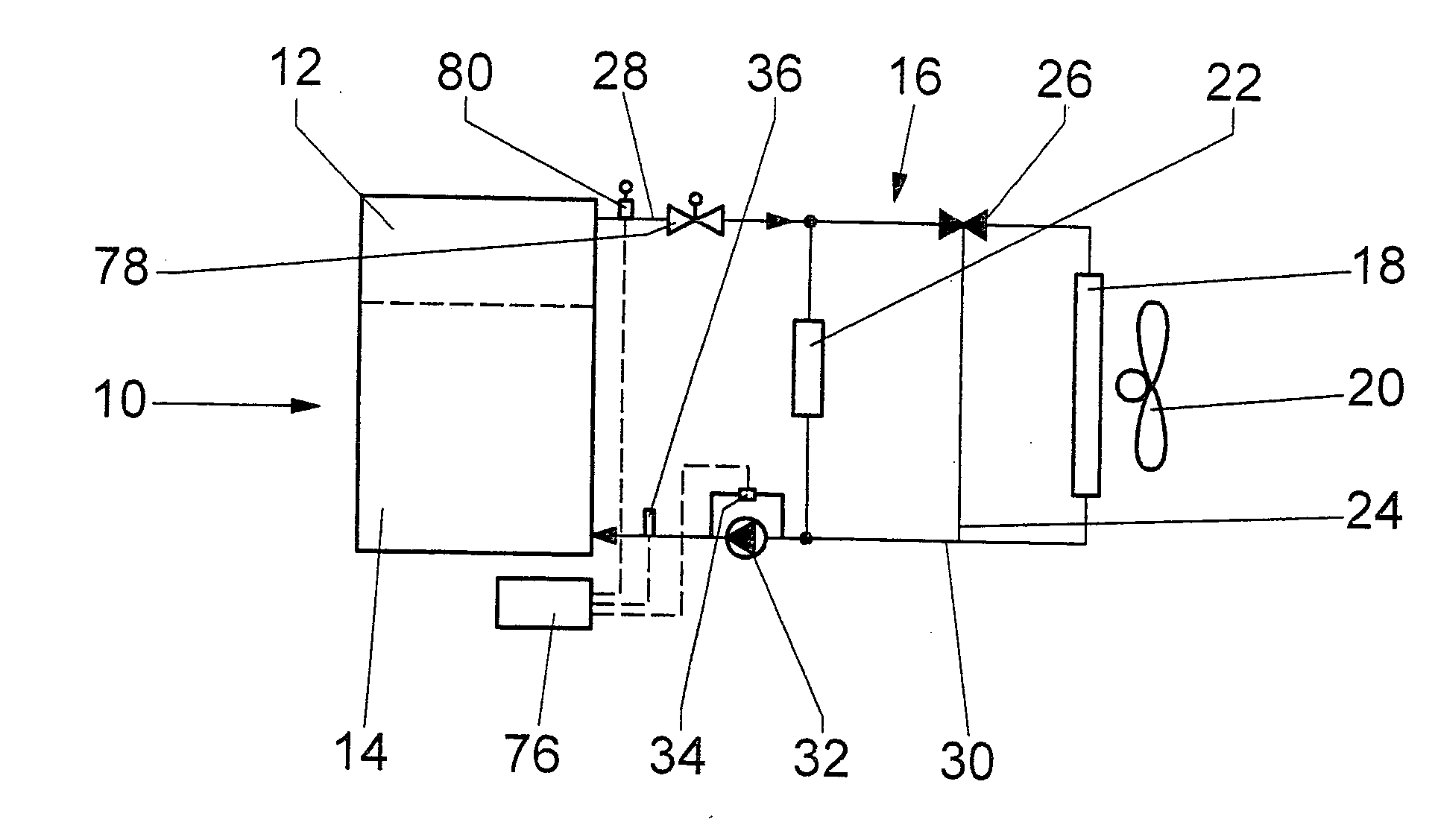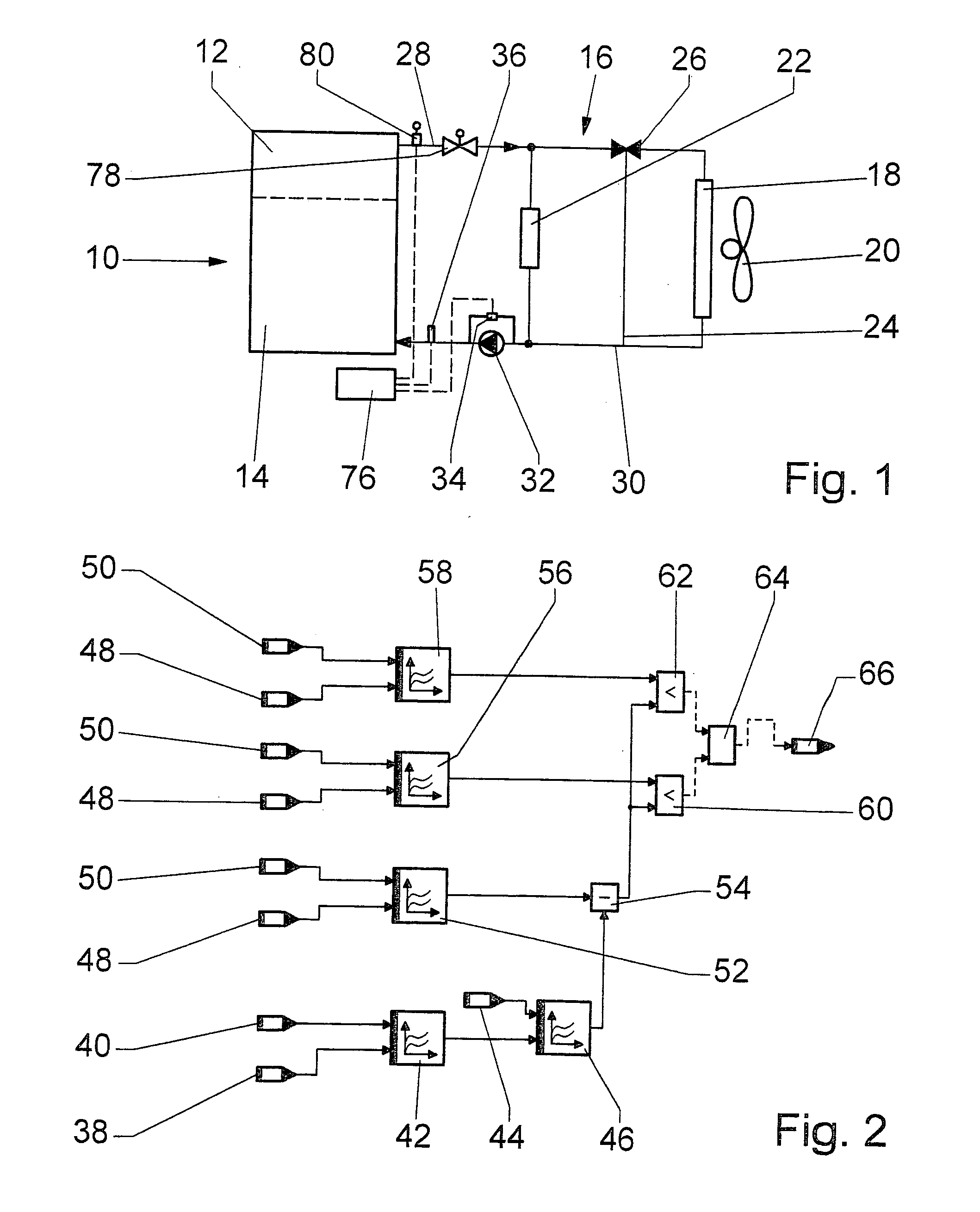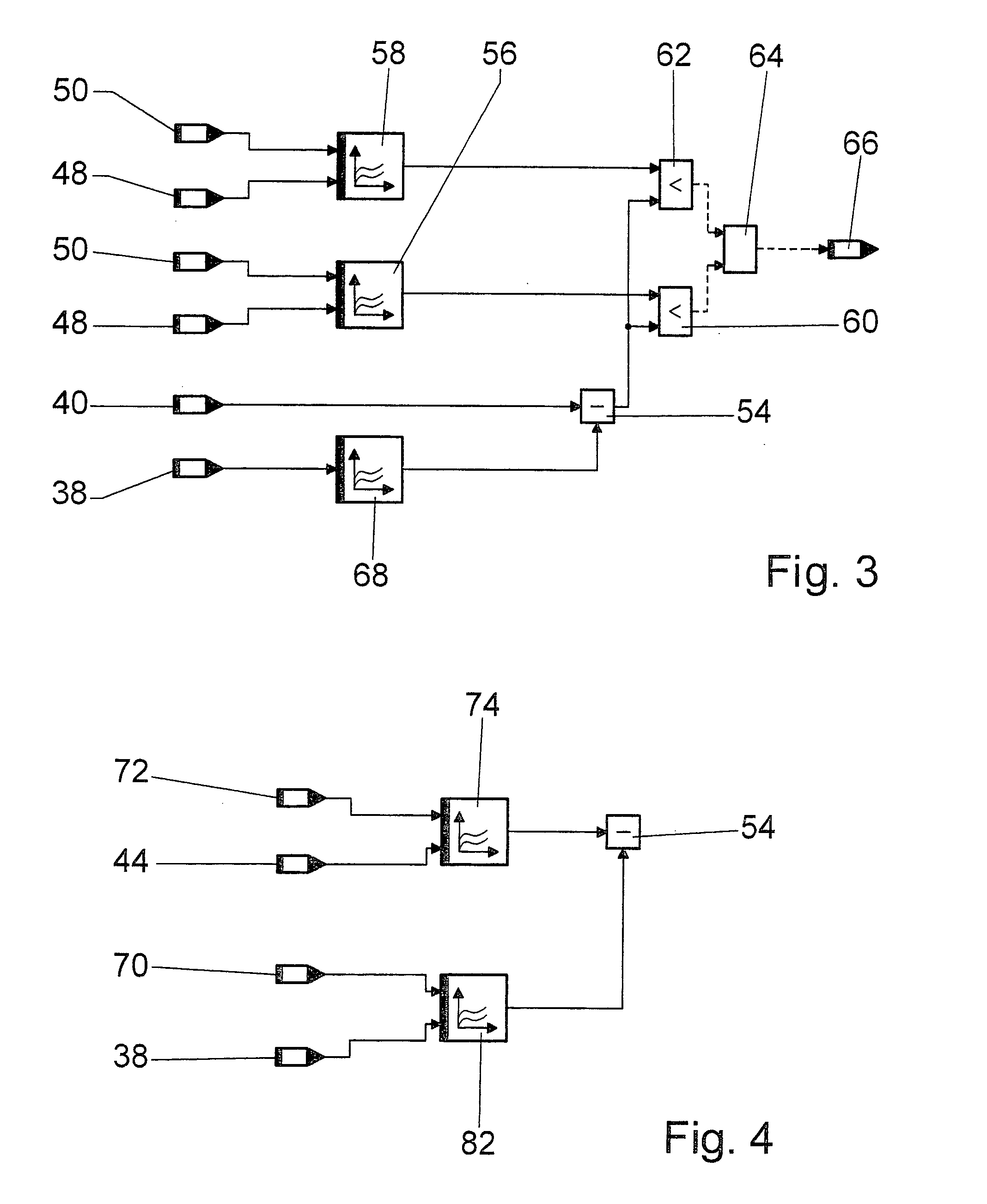Method for monitoring a coolant circuit of an internal combustion engine
a technology of internal combustion engine and coolant circuit, which is applied in the direction of machines/engines, mechanical equipment, instruments, etc., can solve the problems of inability to analyze the interrelationship between these parameters, and the inability to calculate analytically the temperature of the components, etc., and achieve the effect of poor emissions rang
- Summary
- Abstract
- Description
- Claims
- Application Information
AI Technical Summary
Benefits of technology
Problems solved by technology
Method used
Image
Examples
Embodiment Construction
[0016] An internal combustion engine 10 includes a cylinder head 12 and a cylinder block 14, which are connected to a cooling fluid circuit 16. The flow direction of the cooling fluid in the cooling fluid circuit 16 is indicated with arrows. A cooling fluid pump 32 feeds the cooling fluid from an intake line 30, through the cylinder block 14 and the cylinder head 12, and into a return line 28. A radiator 18 that cooperates with a fan 20 is connected between this return line 28 and the intake line 30. A bypass line 24 and a heating system heat exchanger 22 are provided parallel to the radiator 18 and a regulating valve 26 controls the flow through the radiator 18 and the bypass line 24.
[0017] Parallel to the cooling fluid pump 32, a differential pressure sensor 34 is provided, which detects the differential pressure between the suction side and the pressure side of the cooling fluid pump 32. Alternatively or in addition to the differential pressure sensor 34, a pressure sensor 36 is ...
PUM
 Login to View More
Login to View More Abstract
Description
Claims
Application Information
 Login to View More
Login to View More - R&D
- Intellectual Property
- Life Sciences
- Materials
- Tech Scout
- Unparalleled Data Quality
- Higher Quality Content
- 60% Fewer Hallucinations
Browse by: Latest US Patents, China's latest patents, Technical Efficacy Thesaurus, Application Domain, Technology Topic, Popular Technical Reports.
© 2025 PatSnap. All rights reserved.Legal|Privacy policy|Modern Slavery Act Transparency Statement|Sitemap|About US| Contact US: help@patsnap.com



